Figures & data
Table 1. Group characteristics.
Table 2. Overview of acoustic measures.
Table 3. Inter- and intra-rater reliability for spectrogram ratings of consonant clusters: Intraclass correlations (ICC).
Table 4. Percentage inter-judge agreement for spectrogram ratings of consonant clusters.
Figure 1. Ratings of consonant clusters /spr/, /str/, and /skr/ in waveform diagrams and spectrograms for individual speakers with Parkinson’s disease (Sp1-Sp11, grey bars) and for groups (speakers with Parkinson’s disease (PD) and healthy speakers (HS), unfilled bars).
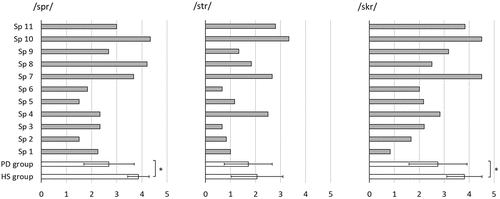
Figure 2. Ratings of individual speech sounds in consonant clusters in waveform diagrams and spectrograms on six-point scale for groups of speakers with Parkinson’s disease (PD) and healthy speakers (HS).
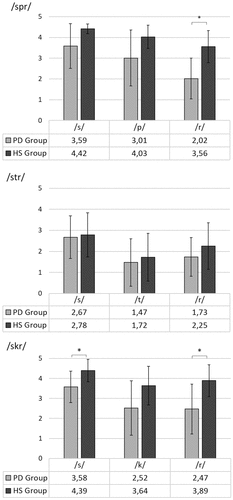
Figure 3. Articulatory motion rate (syllables/sec) in syllable repetition for individual speakers with Parkinson’s disease (Sp1-Sp11, grey bars) and for groups (speakers with Parkinson’s disease (PD) and healthy speakers (HS), unfilled bars).
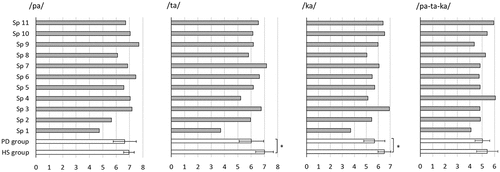
Figure 4. Intersyllabic variation of duration in syllable repetition, expressed as intersyllabic variation quotient (IVQ), for individual speakers with Parkinson’s disease (Sp1-Sp11, grey bars) and for groups (speakers with Parkinson’s disease (PD) and healthy speakers (HS), unfilled bars).
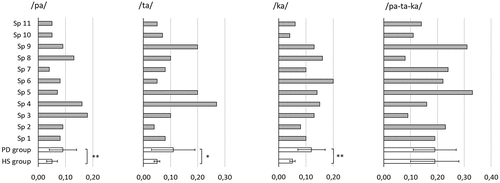
Figure 5. Voice onset time (ms) in syllable repetition for individual speakers with Parkinson’s disease (Sp1-Sp11, grey bars) and for groups (speakers with Parkinson’s disease (PD) and healthy speakers (HS), unfilled bars).
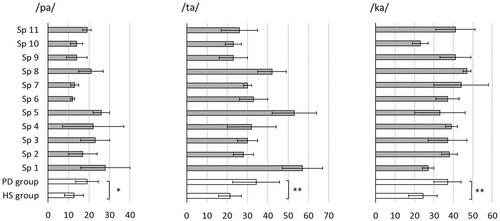
Table 5. Correlations between acoustic measures and intelligibility for speakers with Parkinson’s disease (n = 11).
